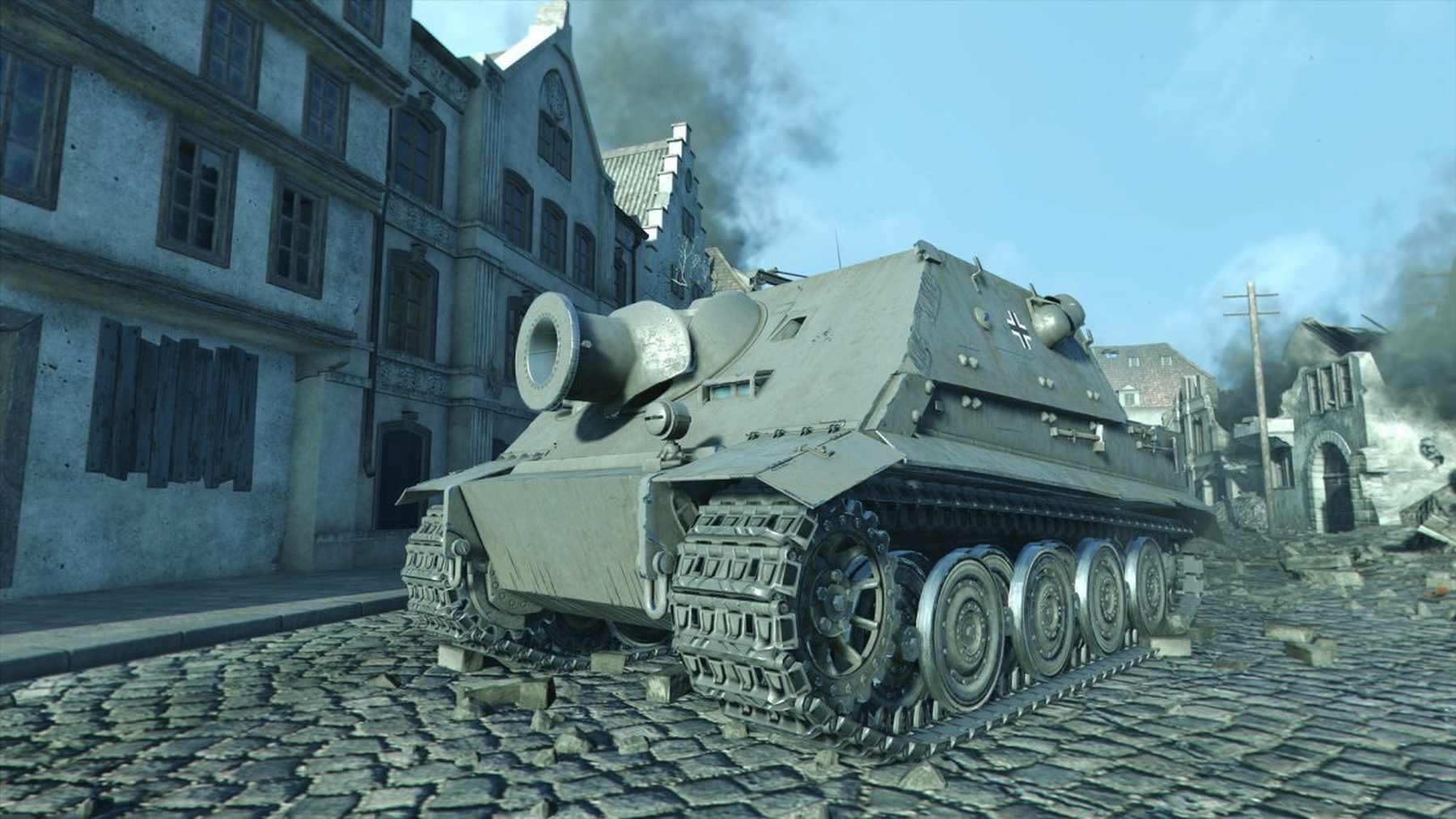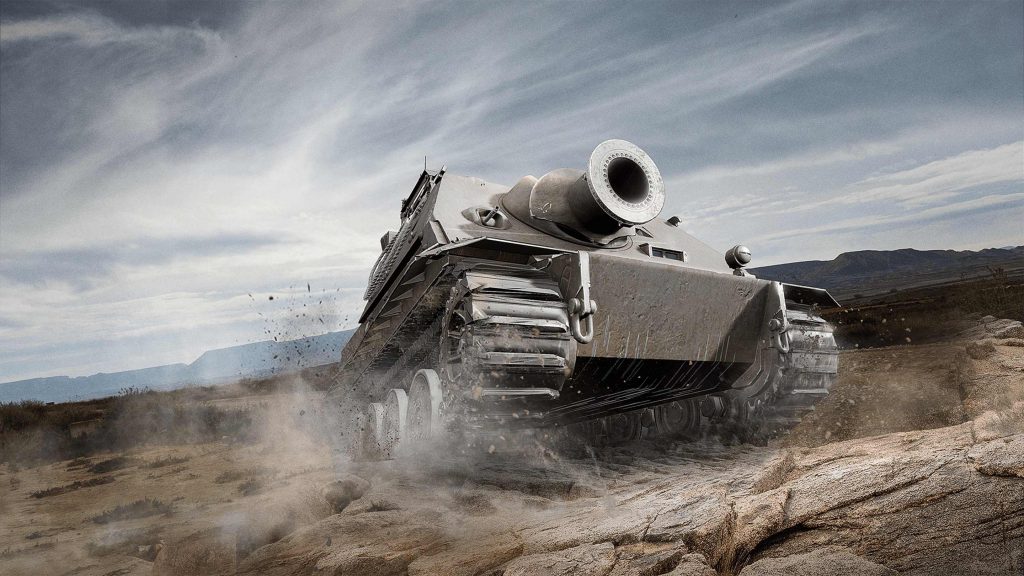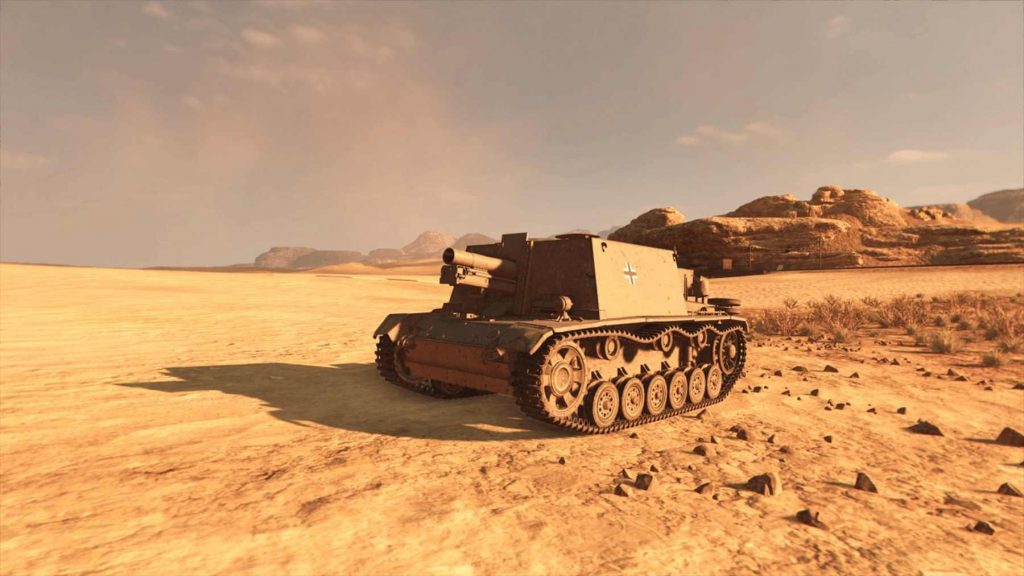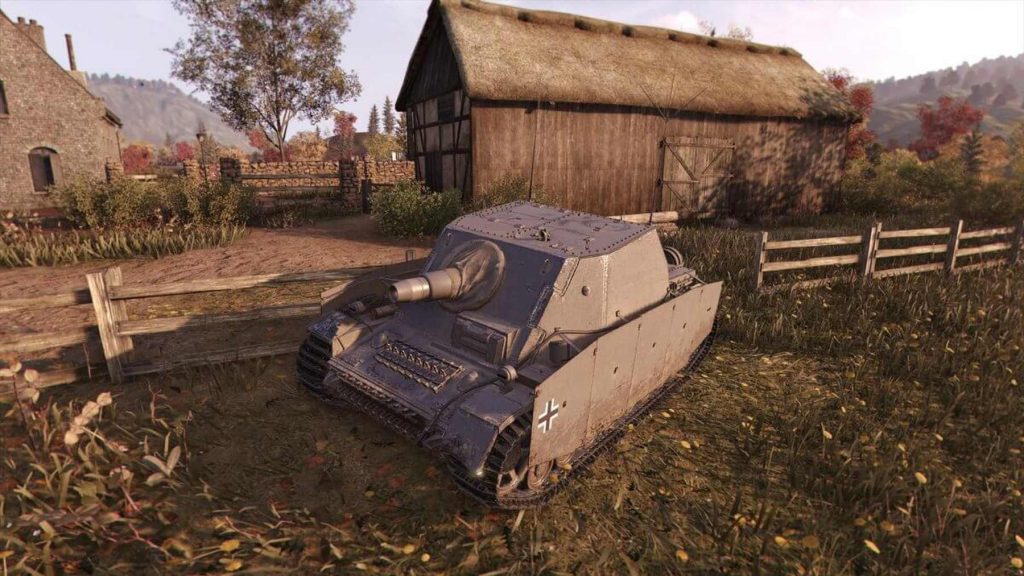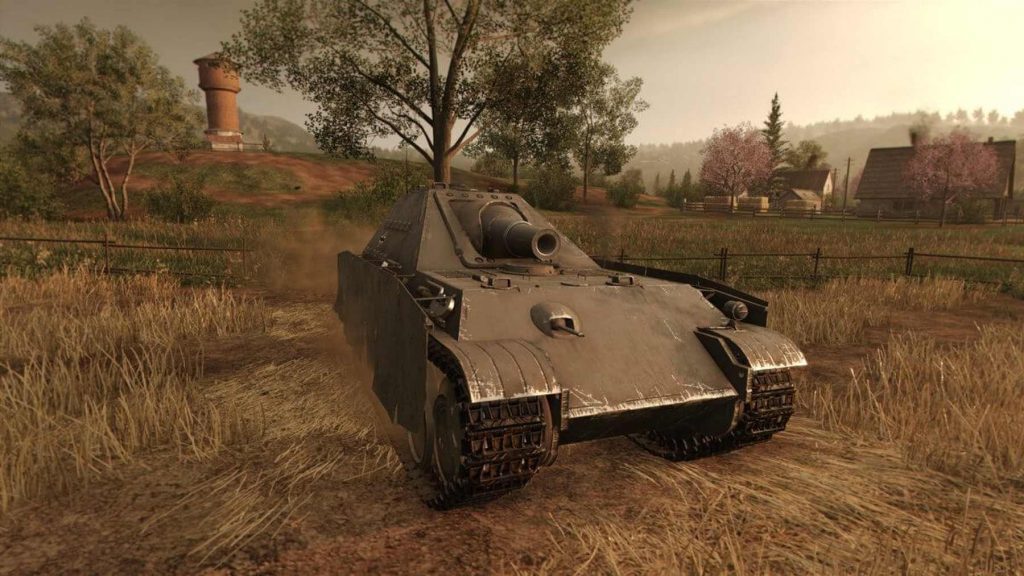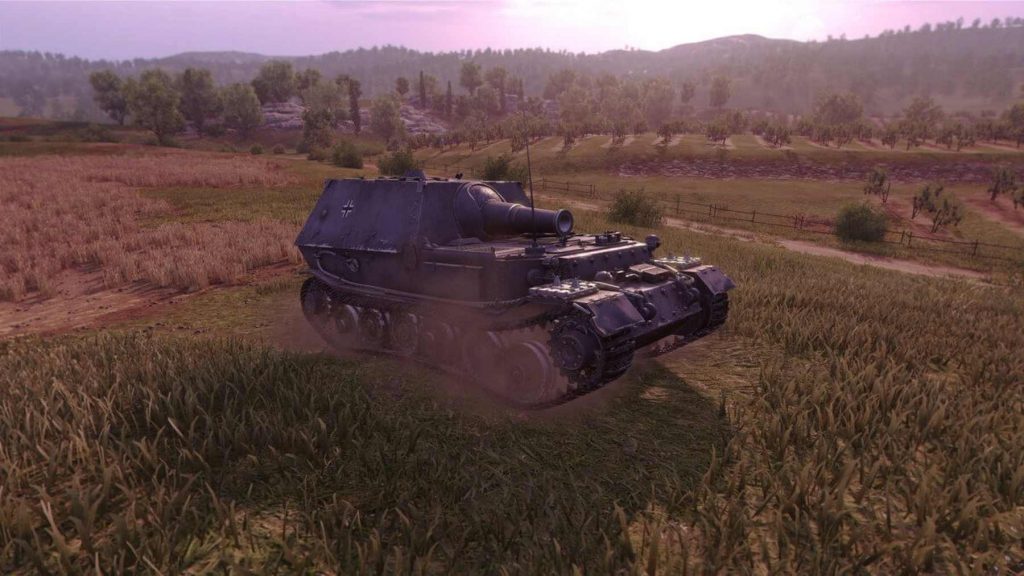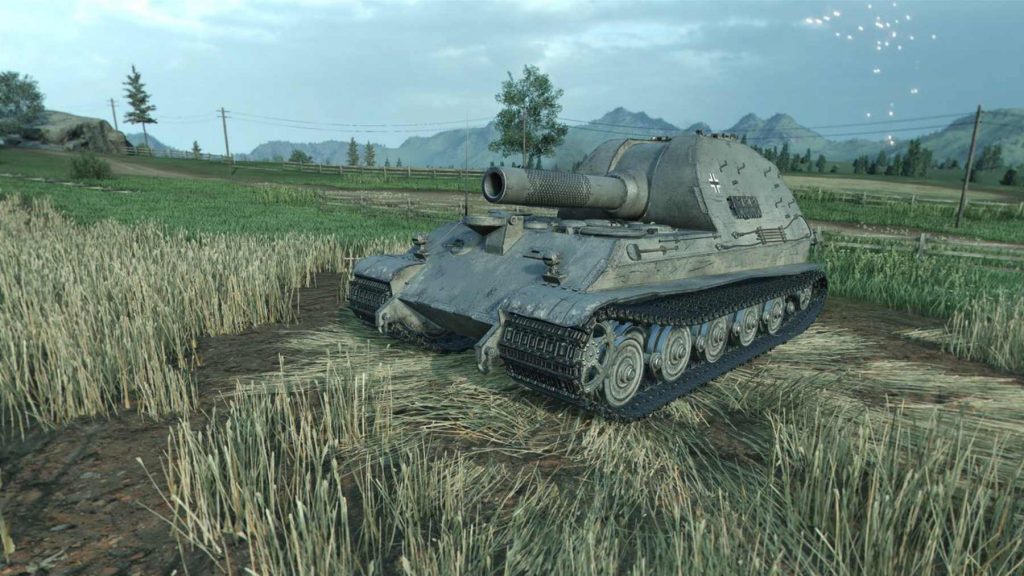– The legendary Sturmtiger returns to the research tree.
On the consoles, WOT announced that from October 12 they will introduce a new branch of Germany, where the same Sturmtiger will become the TOP tier X. Just an explanation, it is introduced as a tank destroyer, not an SPG.
New to Germany Tech Tree – Sturmtiger Branch!
Feel the full power of the new tank destroyers! On October 12, you can start researching with a Tier V tank destroyer StuG III Ausf. B and discover all six Titans of the Sturmtiger line.
New branch of Sturmtiger.
The main feature of this branch is powerful weapons. Thanks to their large-caliber cannons with high-explosive shells, these tank destroyers will inflict significant damage in battle. Just remember about the small aiming angles, like other tank destroyers with turrets.
It is best to use these vehicles in close combat for fire support of tanks in the first line. Let the heavy tanks be on the front lines. And at this time you shoot at the enemies. And remember: high-explosive shells have a large radius of dispersion of fragments. If opponents are grouped, shoot at those who are close to each other. Victory is assured.
It is imperative to choose the right ammo.
This will make it easier to play in the lower levels. At the higher ones, you will need additional skills and knowledge, but the game will be much more fun. In general, the vehicles of this branch will be able to provide an unforgettable experience in battle!
Composition of the new Germany tank destroyer line
• StuIG 33 B (TD-5, regular).
The Sturmgeschütz (StuG) series included some of the most common German armored personnel carriers during World War II. However, even this tank has received modifications. In 1942, a request for a self-propelled gun with greater firepower was fulfilled by installing a 150-mm sIG 33 gun on the StuG chassis. The new vehicle was named Sturminfanteriegeschütze 33B or StuIG 33b. In total, twenty-four pieces of equipment were created and exclusively in 1942.
• Brummbär (TD-6, regular).
When it became clear that the StuIG 33 B was not capable of destroying fortified structures, Alkett proposed an updated concept for a heavy tank destroyer for infantry support: a new 150 mm StuH 43 L / 12 cannon was installed on the Panzer IV chassis. Later, the Sturmpanzer IV became known as Brummbär, which translates to “grizzly bear” or “grumbling bear”. Production began in 1943, and the first test of strength was the Battle of Kursk.
• Sturmpanzer (TD-7, regular).
In the early 1940s, the German army began to consider the possibility of creating an artillery vehicle with a short-barreled 150-mm howitzer for two purposes: supporting the offensive of the German infantry and dominating urban battles. In the early stages of development, it was decided to use the Panzer IV chassis and, after, the Panther chassis.
• Sturmtiger (P) (TD-8, regular).
Although Porsche presented its design for this tank destroyer, the contract for the development of the Tiger I went to Henschel. Presumably, the idea of creating an assault vehicle with a 210 mm mortar and components from a Porsche Tiger originated in 1942. However, this tank destroyer was never released.
• Bär (TD-9, regular).
The desire of the German army to develop a heavily armored assault vehicle to destroy fortified structures did not weaken in 1943. It was at that moment that Krupp offered to put a 30.5 cm L / 16 siege mortar on the Tiger’s chassis. But the 120-ton machine Bär (Russian – “bear”) remained only on the drawings. However, this model influenced the design of the Sturmtiger.
• Sturmtiger (TD-10, regular).
The Sturmtiger or Sturmmörser tank destroyer was distinguished by its special armament: a 380-mm cannon, originally intended for use against enemy submarines. She fired rockets, the exhaust from which created such pressure that a number of ventilation systems had to be installed before the muzzle of the gun. Since only the Tiger I chassis could withstand such a weapon, and the “tigers” themselves were actively used in battles, only eighteen Sturmtiger vehicles were built and only twelve of them were baptized by fire.
Tier X Sturmtiger (Germany, TD-10, regular).
• Gun 38 cm Sturm RW 61 L / 5.4
• Penetration: 280/115/115
• Damage: 1300/1700/1700
source – wotexpress
Il leggendario Sturmtiger torna nell’albero delle ricerche.
Su console, WOT ha annunciato che dal 12 ottobre introdurrà una nuova filiale della Germania, dove lo stesso Sturmtiger diventerà il TOP tier X. Solo una spiegazione, viene introdotto come cacciacarri, non come SPG.< /p>
Novità in Germania Tech Tree – Sturmtiger Branch!
Senti tutta la potenza dei nuovi cacciacarri! Il 12 ottobre, puoi iniziare la ricerca con un livello V cacciacarri StuG III Ausf. B e scopri tutti e sei i Titani della linea Sturmtiger.
Nuovo ramo di Sturmtiger.
La caratteristica principale di questo ramo sono le armi potenti. Grazie ai loro cannoni di grosso calibro con proiettili altamente esplosivi, questi cacciacarri infliggeranno danni significativi in battaglia. Ricorda solo i piccoli angoli di mira, come altri cacciacarri con torrette.
È meglio usare questi veicoli in combattimento ravvicinato per il supporto di fuoco dei carri armati in prima linea. Lasciate che i carri armati pesanti siano in prima linea. E in questo momento spari ai nemici. E ricorda: i proiettili altamente esplosivi hanno un ampio raggio di dispersione dei frammenti. Se gli avversari sono raggruppati, spara a quelli che sono vicini l’uno all’altro. La vittoria è assicurata.
È imperativo scegliere le munizioni giuste.
Questo renderà più facile giocare nei livelli più bassi. A quelli più alti, avrai bisogno di abilità e conoscenze aggiuntive, ma il gioco sarà molto più divertente. In generale, i veicoli di questo ramo essere in grado di fornire un’esperienza indimenticabile in battaglia!
Composizione della nuova linea di cacciacarri Germania
• StuIG 33 B (TD-5, normale).
La serie Sturmgeschütz (StuG) includeva alcuni dei più comuni mezzi corazzati tedeschi durante la seconda guerra mondiale. Tuttavia, anche questo mezzo ha ricevuto modifiche. Nel 1942, una richiesta di un cannone semovente con maggiore potenza di fuoco fu soddisfatta installando un cannone SIG 33 da 150 mm sul telaio StuG. Il nuovo veicolo è stato chiamato Sturminfanteriegeschütze 33B o StuIG 33b. In totale, sono state creati ventiquattro mezzi ed esclusivamente nel 1942.
• Brummbär (TD-6, regolare).
Quando divenne chiaro che lo StuIG 33 B non era in grado di distruggere strutture fortificate, Alkett propose un concetto aggiornato per un cacciacarri pesante per il supporto della fanteria: un nuovo 150 mm StuH 43 L / 12 cannone è stato installato sul telaio Panzer IV. Più tardi, lo Sturmpanzer IV divenne noto come Brummbär, che si traduce in “orso grizzly” o “orso brontolone”. La produzione iniziò nel 1943 e la prima prova di forza fu la battaglia di Kursk.
• Sturmpanzer (TD-7, regolare).
Agli inizi degli anni ’40, l’esercito tedesco iniziò a considerare la possibilità di creare un veicolo di artiglieria con un obice da 150 mm a canna corta per due scopi: supportare l’offensiva della fanteria tedesca e dominando le battaglie urbane. Nelle prime fasi di sviluppo, si è deciso di utilizzare il telaio Panzer IV e. dopo, quello del Patnher.
• Sturmtiger (P) (TD-8, normale).
Sebbene Porsche abbia presentato il suo progetto per questo cacciacarri, il contratto per lo sviluppo del Tiger I è andato a Henschel. Presumibilmente, l’idea di creare un veicolo d’assalto con un mortaio da 210 mm e componenti di una Porsche Tiger è nata nel 1942. Tuttavia, questo cacciacarri non è mai stato rilasciato.
• Bär (TD-9, regolare).
Il desiderio dell’esercito tedesco di sviluppare un veicolo d’assalto pesantemente corazzato per distruggere le strutture fortificate non si indebolì nel 1943. Fu in quel momento che Krupp si offrì di mettere un cannone d’assedio da 30,5 cm L / 16 sul telaio del Tigre. Ma la macchina da 120 tonnellate Bär (russo – “orso”) è rimasta solo sui disegni. Tuttavia, questo modello ha influenzato il design dello Sturmtiger.
• Sturmtiger (TD-10, normale).
Il cacciacarri Sturmtiger o Sturmmörser si distingueva per il suo armamento speciale: un cannone da 380 mm, originariamente destinato all’uso contro i sottomarini nemici. Ha sparato razzi, il cui scarico ha creato una tale pressione che è stato necessario installare un certo numero di sistemi di ventilazione prima della bocca del cannone. Poiché solo il telaio Tiger I poteva resistere a un’arma del genere e le stesse “tigri” venivano utilizzate attivamente nelle battaglie furono costruiti solo diciotto veicoli Sturmtiger e solo dodici di loro furono battezzati dal fuoco.
Sturmtiger di livello X (Germania, TD-10, normale).
• Cannone Sturm da 38 cm RW 61 L / 5,4
• Penetrazione: 280/115/115
• Danno: 1300/1700/ 1700
